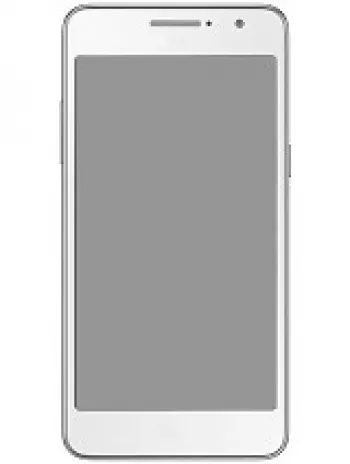
Overview of Samsung E840
The Samsung E840, announced in February 2007 and subsequently discontinued, was a trend-setting mobile phone of its time, representing the sleek and slim design ethos of the mid-2000s. It combined practical functionality with stylish aesthetics, appealing to a wide consumer base looking for a compact yet capable mobile device.
Design and Build
The Samsung E840 boasts a slim profile with dimensions of 101.5 x 52.5 x 10.6 mm and a lightweight of 99 grams. It featured a modern design with a metallic finish, available in colors like Ice Silver, Candy Pink, Topaz Gold, and Noble Blue, catering to diverse personal tastes. The phone's sleek form factor made it easy to carry and use, appealing to those who valued portability and style.
Display
The device is equipped with a 2.2-inch TFT display, capable of showing 256K colors. The screen has a resolution of 240 x 320 pixels, with an approximate pixel density of 182 ppi. This ensured a vibrant and clear display, suitable for browsing images, basic web content, and engaging with the phone's interface.
Camera
The Samsung E840 featured a single 2 MP camera, which was quite standard for mobile phones during its release. The camera was capable of capturing basic photos suitable for daily use and sharing. While it did not include a selfie camera, the rear camera offered video recording capabilities at CIF resolution, facilitating the sharing of visual content among users.
Memory and Storage
Internally, the Samsung E840 offered 70MB of storage, which could be expanded using a dedicated microSD slot. This allowed users to store contacts, messages, and a modest amount of multimedia content. The phonebook could accommodate up to 1000 entries, supporting functionalities like Photocall for a personalized touch. The call log could store up to 20 dialed, 20 received, and 20 missed calls, making it easy for users to track their communication history.
Battery Life
Under the hood, the Samsung E840 housed a removable Li-Ion 690 mAh battery. The battery supported a standby time of up to 360 hours and a talk time of up to 4 hours and 30 minutes. This endurance was adequate for regular day-to-day use without frequent recharging, suitable for typical communication and light multimedia tasks.
Network and Connectivity
The device operated on GSM networks, compatible with 850, 900, 1800, and 1900 MHz bands, ensuring wide-ranging usability in various regions. Connectivity options included Class 10 GPRS and EDGE, offering basic internet connectivity for tasks like browsing and email. Bluetooth 2.0 with A2DP allowed users to connect wireless peripherals such as headsets, enhancing audio experiences without the clutter of wires.
Additional Features
Despite being a feature phone, the Samsung E840 came with several pre-installed applications and utilities. Users could enjoy downloadable games, utilize WAP 2.0/xHTML and HTML browsing via the NetFront 3.4 browser, and send messages through SMS, MMS, and email. Java support (MIDP 2.0) enabled further customization by downloading compatible apps and games. Additionally, the inclusion of FM radio and MP3 ringtones provided entertainment options on the go.
Sound and Audio
Audio output was primarily through the phone's integrated speaker, as the device did not feature a standard 3.5mm audio jack. Instead, users could rely on Bluetooth for wireless audio solutions. The phone supported vibration alerts, and users could personalize their device with downloadable polyphonic and MP3 ringtones, offering a degree of customization for incoming call alerts.
SAR Values and Regulatory Compliance
Regarding safety, the Samsung E840 complied with international standards for radio frequency exposure. The SAR value was documented at 0.87 W/kg for head exposure and 0.80 W/kg for body exposure, while the SAR EU specifically noted a 0.70 W/kg value for head exposure. These figures assured users of safe usage levels consistent with health guidelines.
Price and Market Positioning
At the time of its release, the Samsung E840 was priced around 80 euros, positioning it as an affordable yet stylish option in the mid-range mobile phone market. Its combination of design, functionality, and basic multimedia capabilities made it a desirable choice for individuals looking for an efficient communication device without the complexities of a smartphone.
Conclusion
The Samsung E840 exemplified the mobile technology trends of its era, focusing on compact design, essential functionalities, and attractive aesthetics. For many users, it served as a reliable communication tool, providing robust performance in a sleek package. While technology has advanced significantly since its release, the Samsung E840 remains a memorable example of efficient mobile design and user-centric features from the late 2000s.
Main Features of Samsung E840
- Compact and lightweight design weighing only 99g
- GSM network with support for multiple 2G bands (GSM 850 / 900 / 1800 / 1900)
- Slim form factor with dimensions: 101.5 x 52.5 x 10.6 mm
- TFT display with 256K colors, offering a 2.2-inch screen with a resolution of 240 x 320 pixels
- Expandable storage with microSD card slot
- 2 MP main camera with video recording capabilities
- Bluetooth 2.0 with A2DP for wireless audio connections
- FM radio support for on-the-go listening
- Java support (MIDP 2.0) for additional applications and games
- Removable Li-Ion battery offering up to 360 hours of standby time
- Available in multiple color options: Ice Silver, Candy Pink, Topaz Gold, Noble Blue
Samsung E840 Main Drawbacks
- No loudspeaker; limits call quality in noisy environments.
- Lacks a 3.5mm headphone jack, requiring adapters for standard headphones.
- No WLAN capability; limits internet connectivity options.
- No GPS; inability to use location-based services.
- Limited internal memory of just 70MB, though expandable via microSD.
- Resolution and size of the display may be insufficient by modern standards.
- No front-facing camera for selfies or video calls.
- Removable battery with a limited capacity of 690 mAh, affecting device uptime.
- Discontinued status; likely no longer receiving software updates or support.

View Also
More Phones
All Rights Reserved +14266 Phones © Mobilawy 2025

























